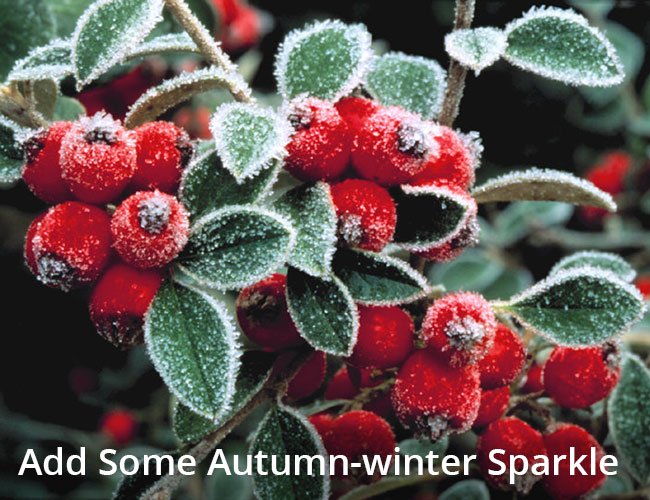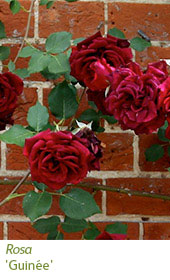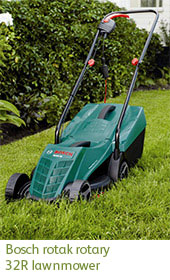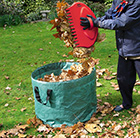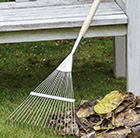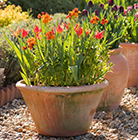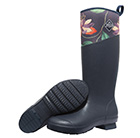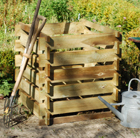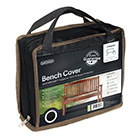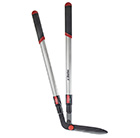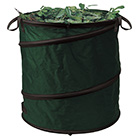|
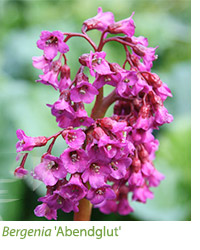 If you can find a sheltered place, under the canopy of a large tree or in a sheltered courtyard, bergenias will do well for you. Their handsome, large leaves earn them the common name of elephant’s ears and their foliage is a real feature. ‘Bressingham White’ is one of the best, producing lots of apple-blossom pink flowers in spring above lush green foliage. ‘Abendglut’ has magenta flowers held on dark stems and red-tinted foliage that develops much more colour in winter. You’ll also get a pink flush on the foliage of ‘Silberlicht’, as well as blush-pink flower heads next spring. These are best planted as ground cover, using three or five, because one tends to get lost, but they do need warmth to flower well. They’re not plants for an exposed corner, or wet soil. If you can find a sheltered place, under the canopy of a large tree or in a sheltered courtyard, bergenias will do well for you. Their handsome, large leaves earn them the common name of elephant’s ears and their foliage is a real feature. ‘Bressingham White’ is one of the best, producing lots of apple-blossom pink flowers in spring above lush green foliage. ‘Abendglut’ has magenta flowers held on dark stems and red-tinted foliage that develops much more colour in winter. You’ll also get a pink flush on the foliage of ‘Silberlicht’, as well as blush-pink flower heads next spring. These are best planted as ground cover, using three or five, because one tends to get lost, but they do need warmth to flower well. They’re not plants for an exposed corner, or wet soil.
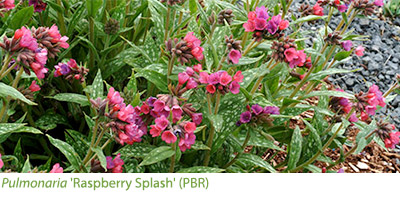
Most pulmonarias also have good winter foliage and those with spotted foliage brighten up a winter’s day. The bright blue ‘Trevi Fountain’ has tongue-like foliage dappled and splashed in silver and lots of bright blue flowers in spring. ‘Rapsberry Splash’ has more slender, heavily marked foliage and small heads of deep pink flowers in spring. These members of the borage family produce lots of nectar, which is replaced very quickly, so their spring flowers are vital for early flowering solitary and bumble bees. Deadhead after flowering, because pulmonarias do set seed, and cut back the foliage after the main flush has finished, before watering well. Should a dry summer follow, trim the foliage again in early September so that the new foliage looks pristine throughout winter. Biennial foxgloves, such as forms of Digitalis purpurea, also produce good winter rosettes.
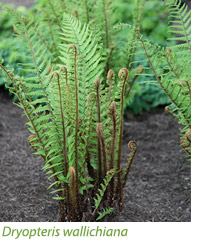 Wintergreen ferns can also add a touch of green and at this time of year, when the sunlight slants through the garden, it’s possible to appreciate the intricate delights of polypodiums, polystichums and dryopteris - whether they’re in a pot or in a shady corner. One of the most handsome is Dryopteris wallichiana because the bristles on the stems of the Himalayan form are soot-black, creating a vivid contrast with the bright green fronds. The handsome native male fern, D. filix-mas, is upright and strong and an excellent plant in deep shade. It will even tolerate dryish soil, mimicking the first three letters of its name - dry. There is a crested form, named ‘Cristata’ and the tips of the fronds divide. The paler green lacier fern, D. affinis, also has a crested form called 'Cristata' and this can tolerate a brighter position. Wintergreen ferns can also add a touch of green and at this time of year, when the sunlight slants through the garden, it’s possible to appreciate the intricate delights of polypodiums, polystichums and dryopteris - whether they’re in a pot or in a shady corner. One of the most handsome is Dryopteris wallichiana because the bristles on the stems of the Himalayan form are soot-black, creating a vivid contrast with the bright green fronds. The handsome native male fern, D. filix-mas, is upright and strong and an excellent plant in deep shade. It will even tolerate dryish soil, mimicking the first three letters of its name - dry. There is a crested form, named ‘Cristata’ and the tips of the fronds divide. The paler green lacier fern, D. affinis, also has a crested form called 'Cristata' and this can tolerate a brighter position.
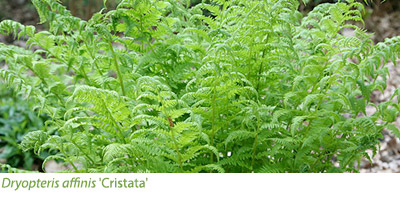
Dryopteris, meaning oak fern, does enjoy shadier conditions and one fern expert always told people to grow it behind the dustbins. They are useful in dark corners and their foliage is always handsome up until the shortest day. Once winter really bites, the fronds flag a little but it’s possible to cut them off close to Christmas to reveal the handsome brown or brown-black knuckles. These make a winter feature on their own and when next April comes, the new fiddle-back fronds are very useful at covering up spent bulbs foliage. If the winter’s warm, as last year’s was, your fronds will stay intact and can be cut down in spring - should you wish to.
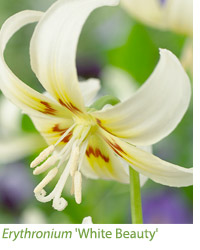 Polystichum setiferum, commonly called the soft shield fern, has fronds which can persist through winter, although in hard weather some browning appears. Plumosomultilobum Group has a two-dimesional leaf resembling a small conifer from afar, but few things look as comforting in winter. Try to find a site that isn’t deluged by too much rain because the mossy fronds don’t like to be too wet. ‘Herrenhausen’ is a much simpler affair with neatly toothed leaflets and it looks at its loveliest when the silken-tipped fronds appear, as if crocheted by a doting grandmother. Erythronium ‘White Beauty’ has a brown necklace inside each flower and this picks up the rusty bristles that give polystichums their name - literally meaning many bristled. In comparison polypodiums (many footed) are Plain Janes, with their neat and leathery fronds, but they love to colonise stone walls and airy banks. And they still provide that bolt of good leaf that keeps the Green Man alive when all else is bleak and brown. Polystichum setiferum, commonly called the soft shield fern, has fronds which can persist through winter, although in hard weather some browning appears. Plumosomultilobum Group has a two-dimesional leaf resembling a small conifer from afar, but few things look as comforting in winter. Try to find a site that isn’t deluged by too much rain because the mossy fronds don’t like to be too wet. ‘Herrenhausen’ is a much simpler affair with neatly toothed leaflets and it looks at its loveliest when the silken-tipped fronds appear, as if crocheted by a doting grandmother. Erythronium ‘White Beauty’ has a brown necklace inside each flower and this picks up the rusty bristles that give polystichums their name - literally meaning many bristled. In comparison polypodiums (many footed) are Plain Janes, with their neat and leathery fronds, but they love to colonise stone walls and airy banks. And they still provide that bolt of good leaf that keeps the Green Man alive when all else is bleak and brown.

Evergreen grasses and sedges can also look at their best now and it’s the sedges, or carex, that seem particularly good at enduring throughout winter. The swirling brown finely-cut tines of Carex testacea take on a red-fox look in winter and a planting of blue Anemone blanda looks sensational once March and April arrive. There are two variegated sedges the green and gold Carex oshimensis ‘Evergold’ and the white and green ‘Everest’. Both look handsome against bare winter earth.
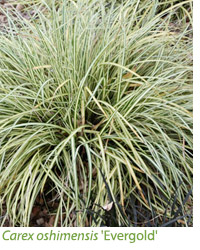 These evergreen grasses make excellent container plants and a winter container can add a huge amount to the garden, especially if strategically positioned close to a doorway, or visible from a window. Opt for a sturdy shape with a wide top, not too tall or too tapered because these can and do blow over in winter winds. Avoid Ali Baba shapes too, they can trap too much water and the pot may then crack. They are also difficult to plant up and empty out. These evergreen grasses make excellent container plants and a winter container can add a huge amount to the garden, especially if strategically positioned close to a doorway, or visible from a window. Opt for a sturdy shape with a wide top, not too tall or too tapered because these can and do blow over in winter winds. Avoid Ali Baba shapes too, they can trap too much water and the pot may then crack. They are also difficult to plant up and empty out.
Go for Variety and Choose a Foliage Theme
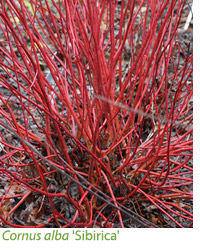 Aim to mix the shapes and textures and emphasise foliage above flower because it endures. A dank corner may need a bolt of variegated green and gold foliage, among the greenery, and this will flatter blues and golds. Silver variegation is cooler in tone and blends best with cool shades of pink and mauve. This combination looks good in wood and stone pots, but less so in orange-toned terracotta. Green foliage is very rich and the perfect foil for white flowers, or it can be mixed with red berries for an ornate festive container. You can even cheat by plunging in some red cornus stems (from Cornus alba ‘Sibirica’) or even spray painting some. Aim to mix the shapes and textures and emphasise foliage above flower because it endures. A dank corner may need a bolt of variegated green and gold foliage, among the greenery, and this will flatter blues and golds. Silver variegation is cooler in tone and blends best with cool shades of pink and mauve. This combination looks good in wood and stone pots, but less so in orange-toned terracotta. Green foliage is very rich and the perfect foil for white flowers, or it can be mixed with red berries for an ornate festive container. You can even cheat by plunging in some red cornus stems (from Cornus alba ‘Sibirica’) or even spray painting some.
Bolts of Winter Warming Green

Green leaved evergreen shrubs are real winter warmers. One of the most elegant is the Christmas box (Sarcococca confusa) because the narrow rich green foliage and fragrant cream flowers look lovely and also pack a powerful scent. Equally stylish is the cream-flowered Skimmia x confusa 'Kew Green' and this will provide conical heads of pale green buds in autumn, long before the cream flowers appear. If you want a touch of festive red, Skimmia japonica 'Rubella' is very similar but with clusters of wine-red buds. Skimmia japonica subsp. reevesiana will also provide you with clusters of red berries. If you’re using a shrub and herbaceous plant arrangement, don’t plonk the shrub in the middle. Arrange it to one side and plant up to it. You can pack the plants in, but there’s no waste, because they can all go in the garden at a later date. Sarcococca hookeriana var. Digyna 'Purple Stem’ is another option, with purplish stems tipped by pink flowers. These shrubs are all small enough for a container.
Touches of Silver
 Some ordinary plants really come into their own in winter, when light levels are low, and Lamium maculatum 'Beacon Silver’ is one of them, whether you’re allowing it to cascade over a pot edge, or sit at the front of a border. It produces a mound of crisp silver leaves, margined in green, so it looks extremely handsome in winter light. Trim it back in autumn for maximum effect. Hebes can provide the same sort of silver highlights, with pink flecks and edges to the foliage. Hebe 'Heartbreaker' develops a red flush as the temperatures drop, while ‘Red Edge’ almost looks like a succulent with its neatly arranged leaves primly edged in red. Euphorbia × martini 'Ascot Rainbow' (PBR) also flushes and blushes once cooler temperatures arrive. Cut this back hard every spring - taking care not to splash yourself with the latex sap which can irritate eyes and skin. Some ordinary plants really come into their own in winter, when light levels are low, and Lamium maculatum 'Beacon Silver’ is one of them, whether you’re allowing it to cascade over a pot edge, or sit at the front of a border. It produces a mound of crisp silver leaves, margined in green, so it looks extremely handsome in winter light. Trim it back in autumn for maximum effect. Hebes can provide the same sort of silver highlights, with pink flecks and edges to the foliage. Hebe 'Heartbreaker' develops a red flush as the temperatures drop, while ‘Red Edge’ almost looks like a succulent with its neatly arranged leaves primly edged in red. Euphorbia × martini 'Ascot Rainbow' (PBR) also flushes and blushes once cooler temperatures arrive. Cut this back hard every spring - taking care not to splash yourself with the latex sap which can irritate eyes and skin.
Snowflakes and Ruffles

Some of the veined heucheras also show well and ‘Green Spice’ has silvered leaves etched in green veins - providing a snowflake effect on the ground. And again, as temperatures drop, plummy tones appear. ‘Silver Scrolls’ has silvered plummy leaves throughout the year, with a light ripple, so this also shines in winter. ‘Caramel’ and ‘Marmalade’ are peachy in tone, with pink-red undersides to their ruffled leaves. Picking up that tone with the Sacred bamboo (Nandina domestica), or the strappy foliage of a dusky Phormium, will work well.
 Photinia x fraseri is an underrated shrub but ‘Red Robin’, the plain green form, has vivid-red new growth that glows and keeps its colour throughout winter. The variegated Photinia × fraseri Pink Marble (‘Cassin') produces young foliage that’s almost purple. Or you could use the cool Euonymus fortunei 'Emerald Gaiety’, an upright evergreen with small green leaves edged in white. For more drama opt for the large green and white leaves of Fatsia japonica 'Spider's Web’. Photinia x fraseri is an underrated shrub but ‘Red Robin’, the plain green form, has vivid-red new growth that glows and keeps its colour throughout winter. The variegated Photinia × fraseri Pink Marble (‘Cassin') produces young foliage that’s almost purple. Or you could use the cool Euonymus fortunei 'Emerald Gaiety’, an upright evergreen with small green leaves edged in white. For more drama opt for the large green and white leaves of Fatsia japonica 'Spider's Web’.
|
Things to do
|



